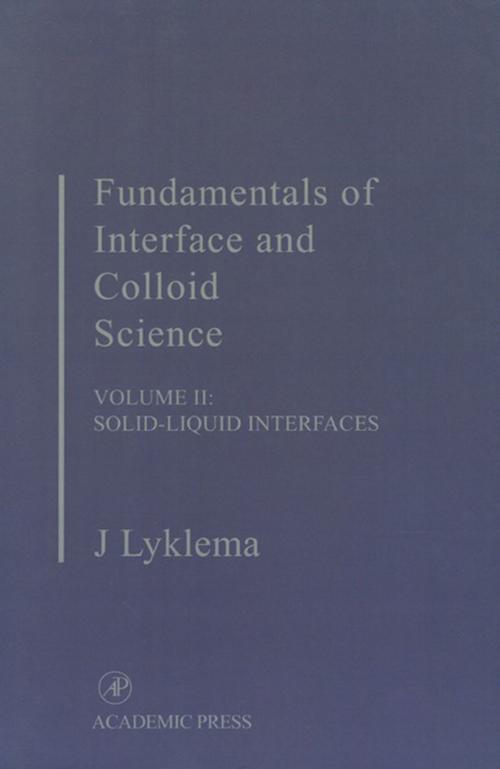Fundamentals of Interface and Colloid Science
Solid-Liquid Interfaces
Nonfiction, Science & Nature, Technology, Engineering, Chemical & Biochemical, Science| Author: | J. Lyklema | ISBN: | 9780080507125 |
| Publisher: | Elsevier Science | Publication: | October 17, 1995 |
| Imprint: | Academic Press | Language: | English |
| Author: | J. Lyklema |
| ISBN: | 9780080507125 |
| Publisher: | Elsevier Science |
| Publication: | October 17, 1995 |
| Imprint: | Academic Press |
| Language: | English |
Interface and colloid science is an important, though often under-valued, branch of science. It has applications and ramifications in domains as disparate as agriculture, mineral dressing, oil recovery, chemical industry, biotechnology, medical science, and many more. Proper application of interface and colloid science requires factual knowledge and insight into the many basic laws of physics and chemistry upon which it is based. Fundamentals of Interface and Colloid Science is the first book to cover this field in the depth neccessary to be a valuable reference and an excellent textbook.
From the beginning to the end of the book, systems of growing complexity are treated gradually. The presentation is particularly suited to emphasize that interfaces are not autonomous phases. As a rule, interfacial properties can be varied only by changing the adjoining phases, so that the properties of these bulk phases must be understood first. The text also recognizes common principles behind a variety of phenomena, and helps the reader to understand them and to develop and improve processes. The systematic treatment of the material in the book makes this clear, and makes the text itself an important contribution to the field.
- Systematic treatment of information
- An excellent addition to volume I
- Two chapters contributed by other experts in the field
- Uses a deductive approach to increase the order of complexity
- Written by a leading expert in the field
- Two chapters contributed by other outstanding scientists
- Uses a systematic and deductive approach
- First comprehensive review of the topic
Interface and colloid science is an important, though often under-valued, branch of science. It has applications and ramifications in domains as disparate as agriculture, mineral dressing, oil recovery, chemical industry, biotechnology, medical science, and many more. Proper application of interface and colloid science requires factual knowledge and insight into the many basic laws of physics and chemistry upon which it is based. Fundamentals of Interface and Colloid Science is the first book to cover this field in the depth neccessary to be a valuable reference and an excellent textbook.
From the beginning to the end of the book, systems of growing complexity are treated gradually. The presentation is particularly suited to emphasize that interfaces are not autonomous phases. As a rule, interfacial properties can be varied only by changing the adjoining phases, so that the properties of these bulk phases must be understood first. The text also recognizes common principles behind a variety of phenomena, and helps the reader to understand them and to develop and improve processes. The systematic treatment of the material in the book makes this clear, and makes the text itself an important contribution to the field.
- Systematic treatment of information
- An excellent addition to volume I
- Two chapters contributed by other experts in the field
- Uses a deductive approach to increase the order of complexity
- Written by a leading expert in the field
- Two chapters contributed by other outstanding scientists
- Uses a systematic and deductive approach
- First comprehensive review of the topic















